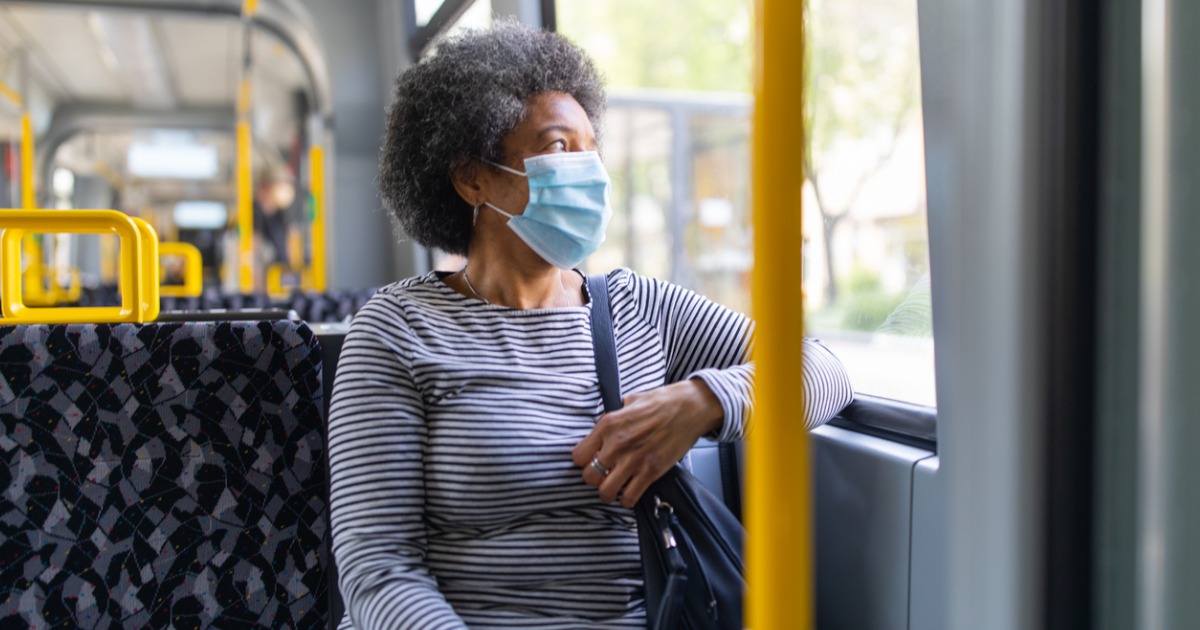People with disability are more likely to be 'transport disadvantaged'. In a pandemic, this reality has been amplified. To help slow the spread of COVID-19, the government has asked people to use public transport less.
But what if you do not have access to other forms of transportation, like a family car or community transport or service provider options? How can we stay safe and still use public transport?
We all must do our bit to slow the spread of COVID-19. For many, that has meant making changes like not making their daily commute into the office or getting groceries delivered and staying at home where possible. By and large, these changes have had a significant impact on daily life, especially where you do not have access to alternatives.
There were 28 million passenger journeys made across the Sydney public transport network last month, more than double the 12 million trips taken during the lockdown in April. This is still 32 million fewer trips being made on buses, trains, trams, and ferries than this time last year. Some people still need to go out and about, and as lockdown is no longer the norm in most places, you may find yourself needing to access public transport as part of your day to day life.
This is especially true if you are one of the many people who do not own or have access to private vehicles due to their disabilities.
If you must use public transport, try to avoid peak times. Transport operators have introduced extra services to help minimise the crowding on services and have made limits to how many people can be onboard and how far apart they can sit or stand. These will be marked clearly.
People who are blind or have low vision will not be able to see any physical distancing signage, marks on designated seats or spots to stand on. If this is you, let the driver or other public transport attendant know that you require assistance.
Dr Norman Swan from ABC’s Coronacast has advocated for the use of masks in situations where social or physical distancing can be hard, like when using public transport. He also recommends frequent and thorough handwashing with warm soapy water or hand sanitiser.
You can buy disposable masks from most chemists, reusable cloth masks (which need to be washed between uses) online or you can make your own. It is important to wear and use masks correctly, and we have collected resources and information to help you below.
Read more New advice on wearing face masks…
It is essential to maintain social (physical) distancing and good hand hygiene by washing your hands frequently and well with warm soapy water where available and hand sanitiser where not.
What to do on Public Transport
- If you feel unwell, stay home.
- Wear a mask.
- Make sure it is fitted correctly and avoid touching your face.
- Wash your hands before you board and after you hop off
- Use hand sanitiser as a stop-gap when out and about
- Stay at least 1.5 metres away from other commuters (where possible)
- Download the Australian Government COVIDSafe app.
- Try to avoid touching points of high contact like grab rails
Read more on the COVIDSafe app...
Note: That last one might be impractical for you, especially if you have a mobility-related disability but make sure you maintain good hand hygiene by using hand sanitiser on the go and washing hands when you arrive at your destination. Gloves might also work for you but be careful when taking them off and wearing them and change them every time you go out.
For more information, call the COVID-19 Disability Information Helpline on 1800 643 787 or check your state transport authority (links below).
- ACT: Transport Canberra COVID-19 transport updates and information
- NSW: Transport NSW COVID-19 Travel advice and information
- NT: NT Gov Coronavirus COVID-19 Public Transport
- QLD: TransLink COVID-safe travel updates
- SA: Adelaide Metro COVID-19 Protecting public transport customers
- TAS: Tasmanian Government: Travel Safe Together
- WA: Transperth Passenger Information COVID-19 coronavirus
- VIC: Public Transport Victoria Coronavirus (COVID-19) information


